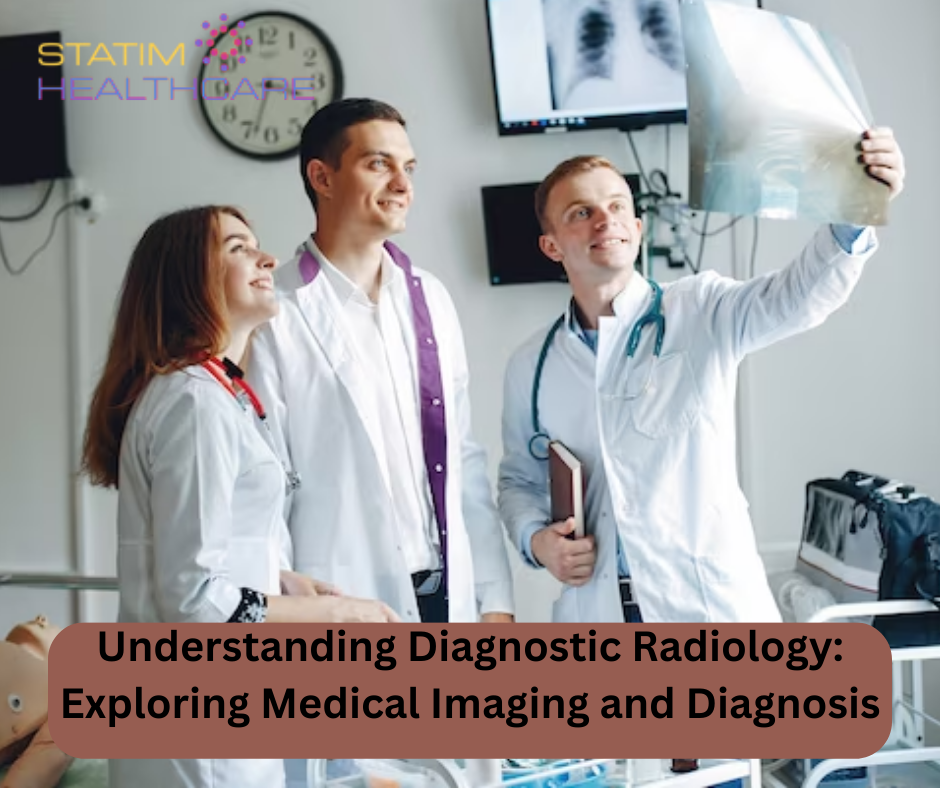Diagnostic radiology plays a crucial role in the field of medical imaging and diagnosis. Through the use of advanced imaging techniques, diagnostic radiology enables healthcare professionals to obtain detailed and accurate information about a patient’s condition, aiding in the formulation of effective treatment plans.
Diagnostic radiology is at the forefront of medical imaging, providing valuable insights into a wide range of medical conditions. By utilizing various imaging modalities, radiologists can visualize internal structures, identify abnormalities, and assist in making accurate diagnoses. These imaging techniques not only aid in the detection of diseases but also help monitor treatment progress and guide interventions. American radiology specialists ensure that patients receive top-quality imaging services, contributing to improved patient outcomes and enhanced healthcare delivery.
Imaging Modalities in Diagnostic Radiology
Diagnostic radiology employs various imaging modalities to capture detailed images of the body’s internal structures. These modalities include:
X-ray Imaging
Uses low-dose radiation to visualize bones and lungs.
Computed Tomography (CT) Scanning
Combines X-rays and computer processing for detailed cross-sectional images.
Magnetic Resonance Imaging (MRI)
Utilizes magnetic fields and radio waves for high-resolution images of organs and tissues.
Ultrasound Imaging
Uses sound waves to generate real-time images, commonly for the abdomen, pelvis, and vascular system.
Nuclear Medicine Imaging
Involves radiopharmaceuticals to assess organ function and detect abnormalities.
These modalities enable radiologists to diagnose and treat various medical conditions effectively.
Applications of Diagnostic Radiology
Diagnostic radiology specialist plays a vital role in various medical specialties, providing valuable insights for accurate diagnosis and effective treatment. Some of its key applications include:
Abdominal Imaging and its Diagnostic Value
Abdominal imaging techniques, such as X-rays, CT scans, and MRI, are instrumental in assessing abdominal organs, detecting abnormalities, and aiding in the diagnosis of conditions like gastrointestinal disorders, liver disease, and kidney stones.
Breast Imaging for Early Detection of Breast Cancer
Mammography, ultrasound, and MRI are powerful tools for breast imaging, enabling early detection of breast cancer and guiding treatment decisions, leading to improved outcomes.
Cardiac and Pulmonary Imaging
Techniques like CT angiography, cardiac MRI, and pulmonary function tests help evaluate heart and lung conditions, identify cardiovascular diseases, detect pulmonary abnormalities, and assess overall cardiac and pulmonary health.
Musculoskeletal Imaging
X-rays, CT scans, and MRI are used to diagnose bone fractures, joint diseases, sports injuries, and musculoskeletal conditions, aiding in treatment planning and monitoring response to therapy.
Neuroradiology
Neuroradiology techniques like MRI, CT scans, and angiography are employed to visualize the brain, spinal cord, and nervous system, facilitating the diagnosis of neurological disorders, strokes, tumors, and other conditions.
Pediatric Radiology and its Specialized Imaging Techniques
Pediatric radiology utilizes imaging techniques tailored for children, including X-rays, ultrasound, and MRI, to diagnose congenital abnormalities, developmental disorders, injuries, and diseases specific to pediatric patients.
These applications of diagnostic radiology highlight its versatility and importance in various medical specialties, contributing to accurate diagnoses, timely interventions, and improved patient outcomes.
The Diagnostic Radiology Process
The diagnostic radiology process involves several stages, including patient preparation, acquisition of medical images, interpretation by radiologists, and collaboration with other healthcare professionals. This collaborative approach ensures comprehensive evaluation and optimal patient care.
Advancements in Diagnostic Radiology
Diagnostic radiology has witnessed remarkable advancements, revolutionizing the field and enhancing patient care. Key advancements include:
Introduction of Advanced Imaging Technologies
Cutting-edge technologies, such as digital radiography, cone beam CT, and positron emission tomography (PET), have improved image quality and diagnostic accuracy.
Artificial Intelligence and Machine Learning in Radiology
AI algorithms assist radiologists in image interpretation, aiding in faster and more precise diagnoses. Machine learning algorithms can analyze vast amounts of data to identify patterns and predict disease outcomes.
3D and 4D Imaging Techniques
Three-dimensional (3D) and four-dimensional (4D) imaging techniques provide a more comprehensive visualization of anatomical structures and dynamic processes, enabling better understanding and treatment planning.
Radiation Dose Reduction and Patient Safety
Continuous efforts are being made to minimize radiation exposure during imaging procedures while maintaining diagnostic quality. Advanced imaging systems and optimized protocols help in achieving this balance, prioritizing patient safety.
These advancements in diagnostic radiology contribute to improved diagnostic accuracy, enhanced patient outcomes, and more personalized and precise medical care.
Challenges and Limitations in Diagnostic Radiology
While interventional radiology services in USA offer invaluable diagnostic insights, it also presents challenges and limitations. Concerns about radiation exposure and dose optimization strategies necessitate a cautious approach. Additionally, image interpretation challenges and the integration of radiology with electronic health records require ongoing attention and improvement.
Collaboration and Multidisciplinary Approach
A significant aspect of diagnostic radiology is collaboration among radiologists and other healthcare professionals. This multidisciplinary approach ensures accurate diagnoses, effective treatment planning, and improved patient outcomes.
Statim Healthcare recognizes the importance of collaboration, offering comprehensive radiology services with a distinguished panel of radiologists licensed across different geographies. With expertise in specialties such as abdominal imaging, breast imaging, cardiac and pulmonary imaging, musculoskeletal radiology, neuroradiology, nuclear medicine, pediatric radiology, and ultrasound, they contribute to the multidisciplinary approach in healthcare.
Conclusion
Diagnostic radiology is a cornerstone of modern healthcare, enabling accurate diagnoses through medical imaging techniques. The collaboration between radiologists and other specialists, such as those best outsourcing radiology services provided by Statim Healthcare, enhances the multidisciplinary approach to patient care. As technology continues to advance, diagnostic radiology is playing an increasingly pivotal role in the early detection and treatment of various medical conditions. By staying at the forefront of these advancements and fostering collaboration, we can ensure improved patient outcomes and a healthier future.

